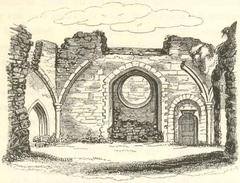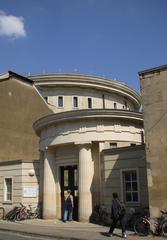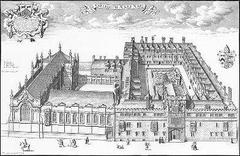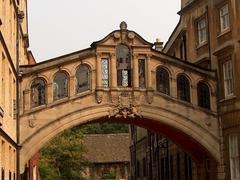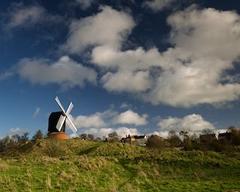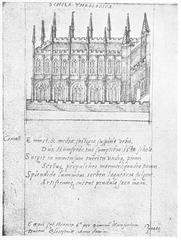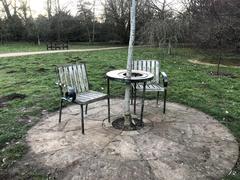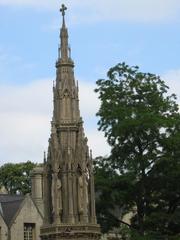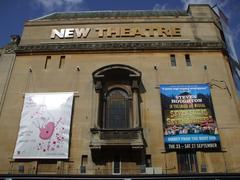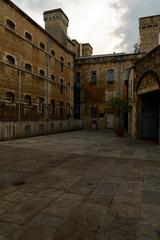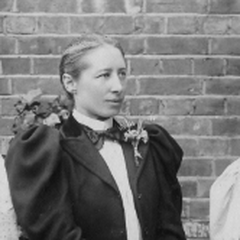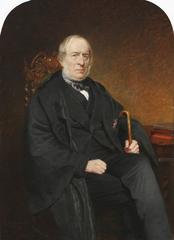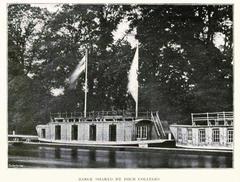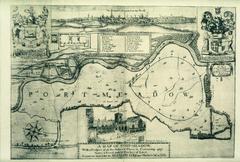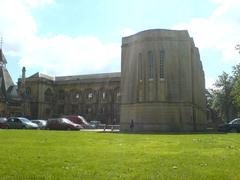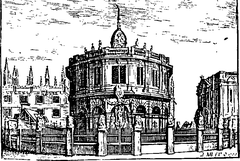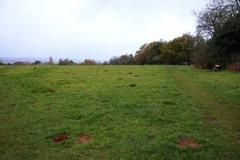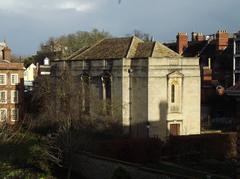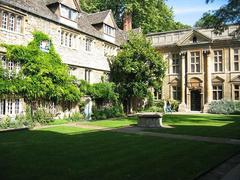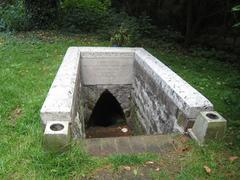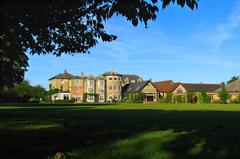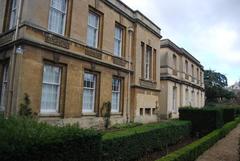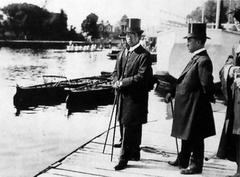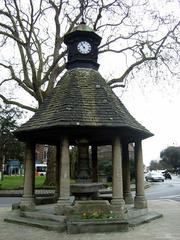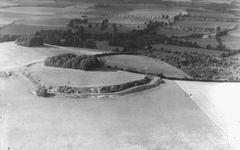Old Arboretum Oxford Visiting Hours, Tickets, and Historical Sites
Date: 24/07/2024
Discover the Old Arboretum in Oxford: History, Significance, and Visitor Information
Nestled in the heart of Oxford, the Old Arboretum is a historic treasure that has delighted visitors for nearly 400 years. As part of the Oxford Botanic Garden and Arboretum, this site offers an intriguing blend of history, natural beauty, and educational opportunities. Established in 1621 by Sir Henry Danvers, the first Earl of Danby, the Old Arboretum was originally known as the Physic Garden, a collection of medicinal plants. Over the centuries, it has evolved into a world-class arboretum, housing an impressive array of plant species and serving as a vital resource for botanical research and conservation (Oxford Botanic Garden and Arboretum).
Table of Contents
- Introduction
- History of the Old Arboretum, Oxford
- Integration with Harcourt Arboretum
- Cultural and Academic Significance
- Visitor Information
- FAQ
- Conclusion
Exploring the Old Arboretum, Oxford - History, Visiting Hours, and Ticket Information
Introduction
The Old Arboretum, part of the Oxford Botanic Garden and Arboretum, is a historical gem that has been captivating visitors for nearly 400 years. Whether you’re a history enthusiast, a botany lover, or a curious traveler, the Old Arboretum offers a unique blend of rich history, stunning landscapes, and educational opportunities. This guide provides a comprehensive overview of its history, visitor information, and tips to make the most out of your visit.
History of the Old Arboretum, Oxford
Foundation and Early Years
The Old Arboretum has a rich history dating back to its foundation in 1621. Established by Sir Henry Danvers, the first Earl of Danby, it was initially known as the Physic Garden, a collection of medicinal plants. Danvers donated £250 (equivalent to approximately £33,000 today) to purchase around five acres of low-lying pasture on the banks of the River Cherwell (Oxford Botanic Garden and Arboretum).
Development and Expansion
Between 1621 and 1636, the garden was raised above the flood level of the River Cherwell using 4,000 loads of muck and dung provided by the University’s official scavenger, Mr. Windiat (Oxford Botanic Garden and Arboretum). The Walled Garden, completed in 1633, was constructed using local limestone from Headington quarries, with foundations almost as deep as the wall is high (Oxford Botanic Garden and Arboretum).
The Bobart Legacy
Jacob Bobart the Elder, appointed as the first keeper in 1642, played a crucial role in the garden’s early development. Despite the outbreak of the English Civil War, Bobart continued planting and maintaining the garden. He, along with his son Jacob Bobart the Younger, established a herbarium, which became the foundation of the Oxford University Herbaria. This collection now contains over one million specimens (Oxford Botanic Garden and Arboretum).
19th and 20th Century Developments
In 1853, the Danby Gate, named after the garden’s founder, was completed. This gate, featuring a bust of Sir Henry Danvers, underwent conservation work in 2018 to restore it to its former glory (Oxford Botanic Garden and Arboretum). The same year saw the flowering of the giant water lily, Victoria amazonica, in the specially built Water Lily House tank. However, this led to a localized malaria outbreak, necessitating quinine treatment for the garden staff (Oxford Botanic Garden and Arboretum).
In 1949, a dawn redwood (Metasequoia glyptostroboides) was planted in the Walled Garden. This tree, raised from one of the original seed collections following its discovery in 1941, has the potential to reach the height of Magdalen College Tower (Oxford Botanic Garden and Arboretum).
Modern Era and Conservation Efforts
The 1970s saw significant redevelopment with the rebuilding of the glasshouses in 1971, which are still in use today (Oxford Botanic Garden and Arboretum). In 1991, the ‘Friends of the Botanic Garden and Arboretum’ were established, and in 2006, they supported the purchase of Palmer’s Leys, dramatically expanding the footprint of Harcourt Arboretum (Oxford Botanic Garden and Arboretum).
The Oxford Florilegium Society was established in 2010, producing botanical illustrations for archival purposes and documenting the living collections at the Garden and Arboretum. This initiative provides an invaluable resource for future generations (Oxford Botanic Garden and Arboretum).
Integration with Harcourt Arboretum
The Harcourt Arboretum, spread across 130 acres, dates back to 1835 and has been part of Oxford University since 1963. Originally designed by William Sawrey Gilpin, it houses some of the UK’s oldest redwood trees and a variety of other species such as birch, pine, lime, and oak (Day Out in England). The integration of Harcourt Arboretum with the Oxford Botanic Garden has enriched the botanical diversity and conservation efforts of the institution.
Cultural and Academic Significance
Over its nearly 400-year history, the Old Arboretum has maintained a world-class position in terms of its academic location, historical significance, and conservation efforts. It continues to draw academics, writers, and visitors from around the world, offering a unique blend of history, literature, and botany (OX Magazine).
The Old Arboretum’s history is a testament to the enduring importance of botanical gardens in scientific research, education, and conservation. Its evolution from a physic garden to a modern arboretum reflects the broader trends in botanical science and the ongoing commitment to preserving plant biodiversity for future generations.
Visitor Information
Visiting Hours
The Old Arboretum is open daily from 9 am to 5 pm. Please check their official website for any changes in visiting hours due to holidays or special events.
Tickets
Tickets can be purchased at the entrance or online. General admission is £5 for adults, £3 for children, and free for children under 5. Discounts are available for students, seniors, and groups (Oxford Botanic Garden and Arboretum Tickets).
Accessibility
The Arboretum is wheelchair accessible, with designated pathways and facilities. Wheelchairs are available at the entrance upon request.
Travel Tips
- Getting There - The Old Arboretum is located in Oxford, easily accessible by public transport, car, or bike. Parking is available on-site.
- Nearby Attractions - Don’t miss other historical sites in Oxford, such as the Ashmolean Museum, Christ Church College, and the Oxford University Museum of Natural History.
- Best Time to Visit - Spring and summer offer the best views with blooming flowers and lush greenery.
FAQ
What are the visiting hours of the Old Arboretum?
The Old Arboretum is open daily from 9 am to 5 pm. Please check their official website for any changes in visiting hours due to holidays or special events.
How much are tickets to the Old Arboretum?
General admission is £5 for adults, £3 for children, and free for children under 5. Discounts are available for students, seniors, and groups.
Is the Old Arboretum wheelchair accessible?
Yes, the Arboretum is wheelchair accessible, with designated pathways and facilities. Wheelchairs are available at the entrance upon request.
Are there guided tours available?
Yes, the garden hosts a variety of events throughout the year, including historic tours. Check the garden’s official website for the latest schedule and availability.
Can I bring my dog to the Old Arboretum?
Dogs are not permitted, except for assistance dogs.
Conclusion
The Old Arboretum in Oxford is more than just a botanical garden; it’s a living museum of plant biodiversity and a testament to centuries of botanical science. Whether you’re visiting for its historical significance, its academic contributions, or simply to enjoy its natural beauty, the Old Arboretum offers something for everyone. Plan your visit today to explore this remarkable site and immerse yourself in its rich heritage and stunning landscapes.
Call to Action
Stay updated with the latest news and events by downloading the Audiala mobile app. Don’t forget to check out other related posts and follow us on social media for more updates.



